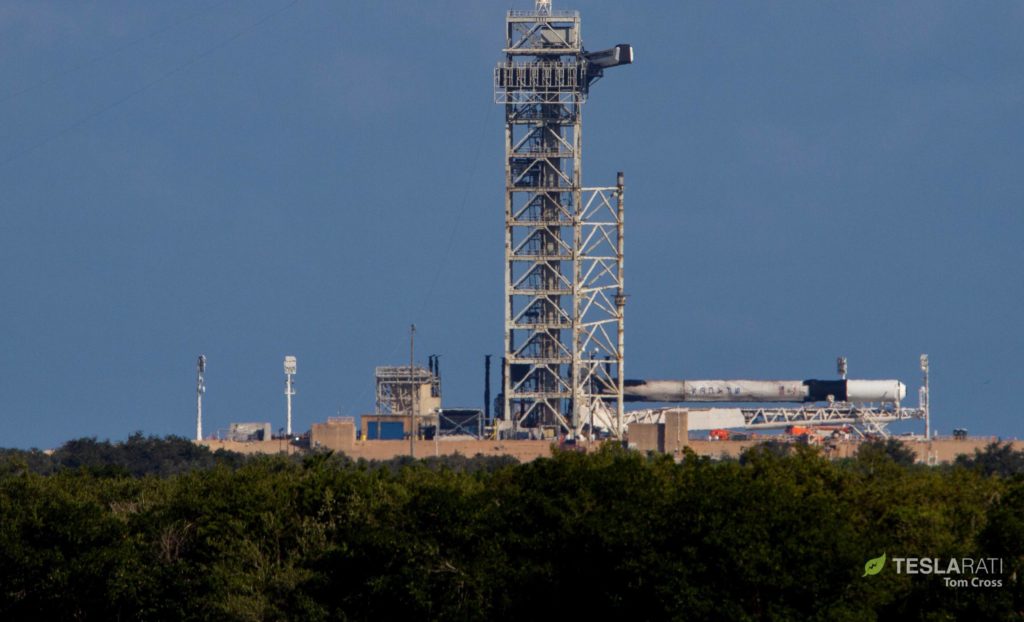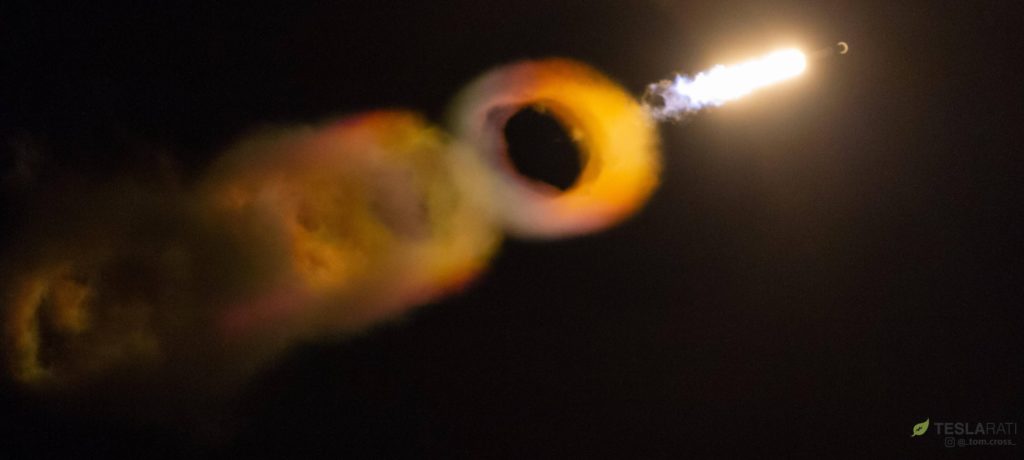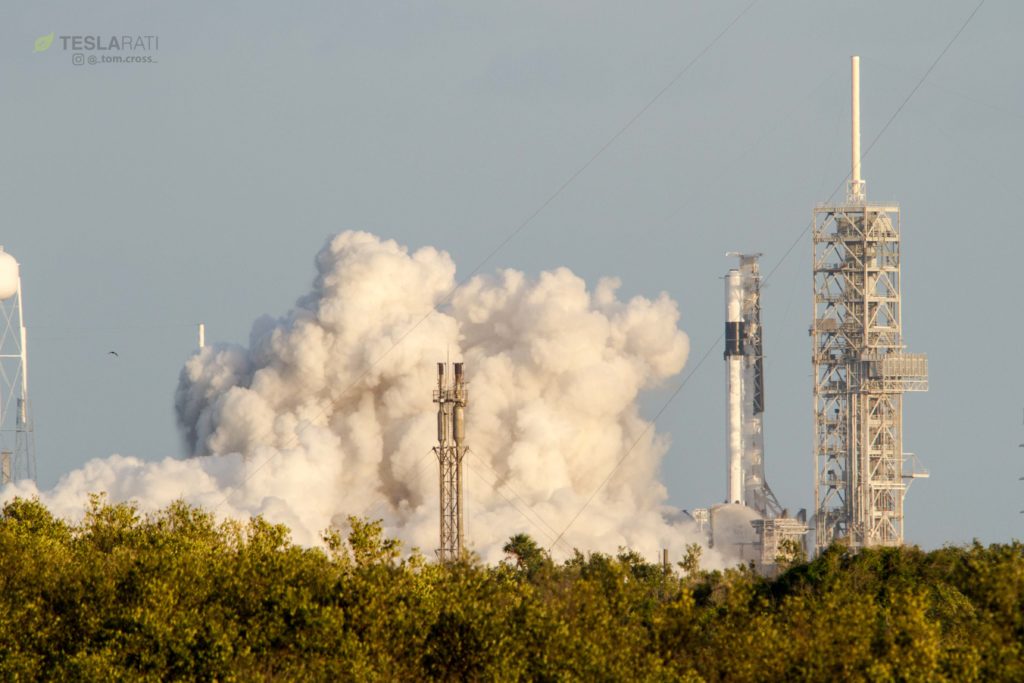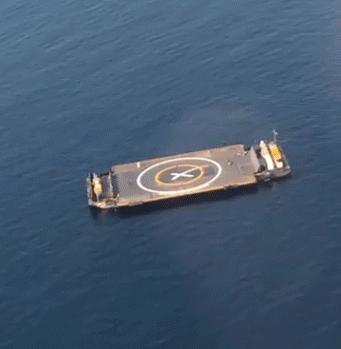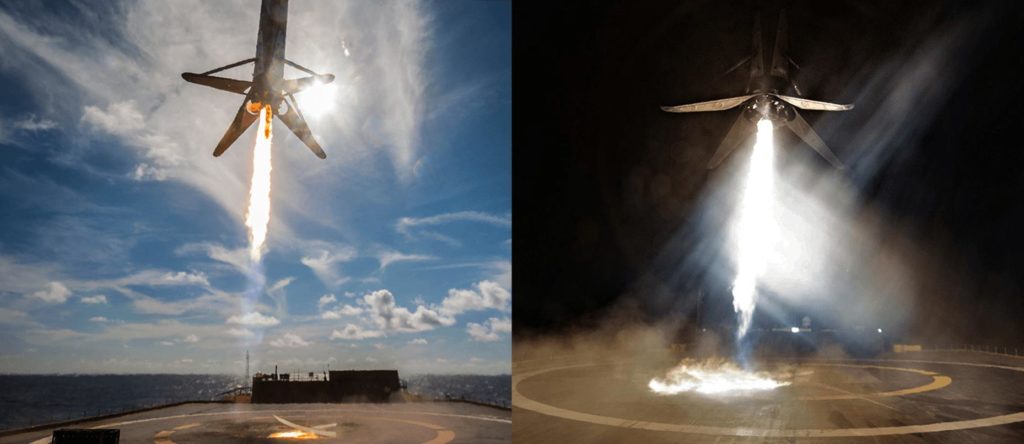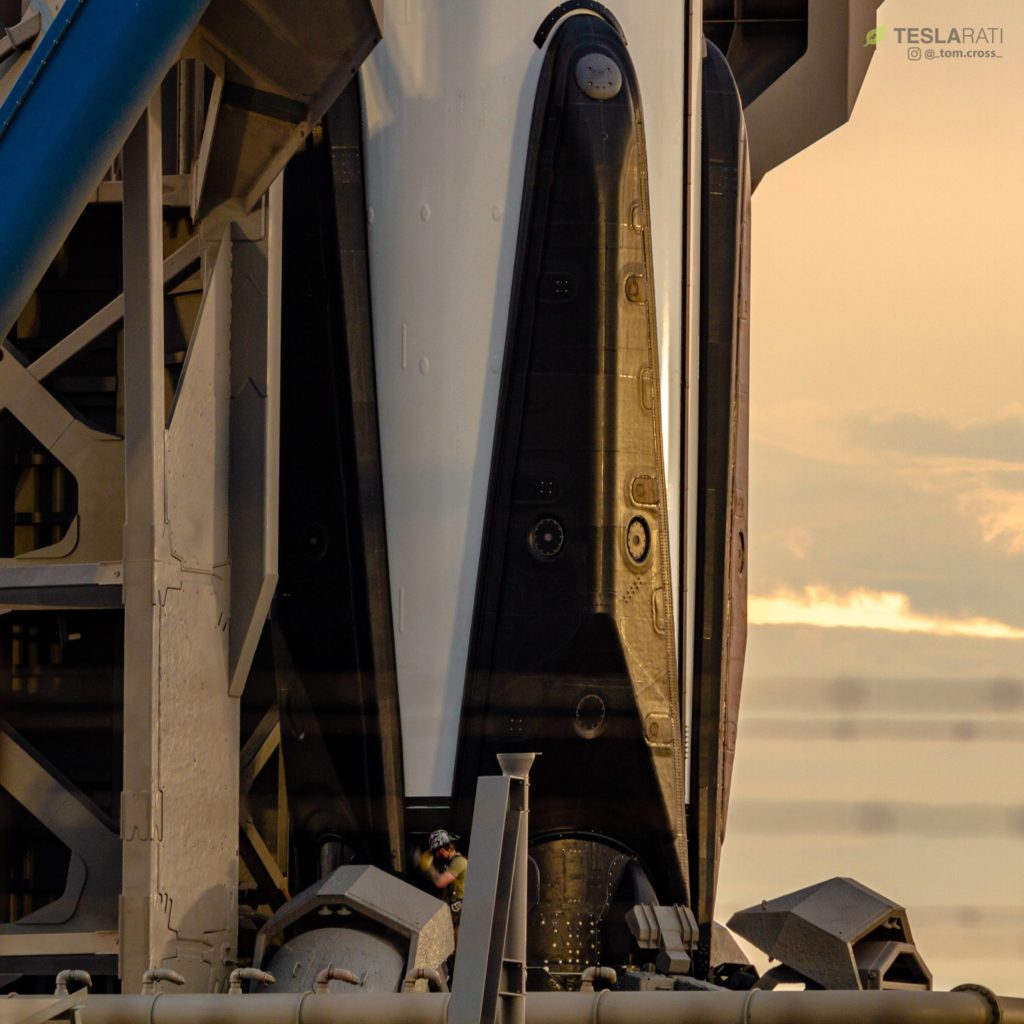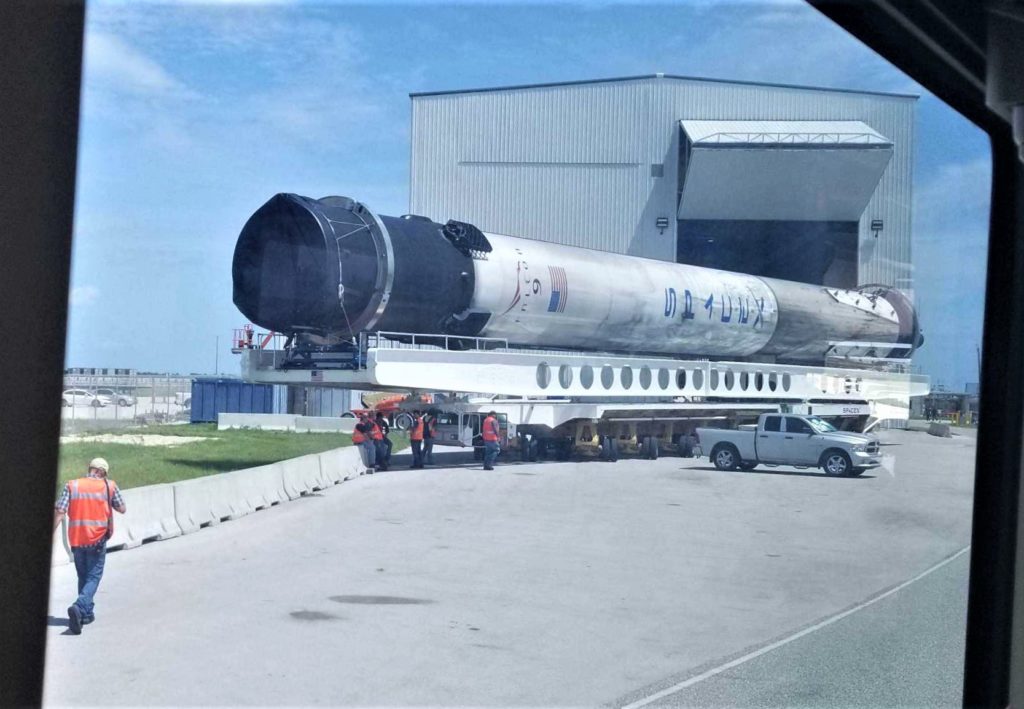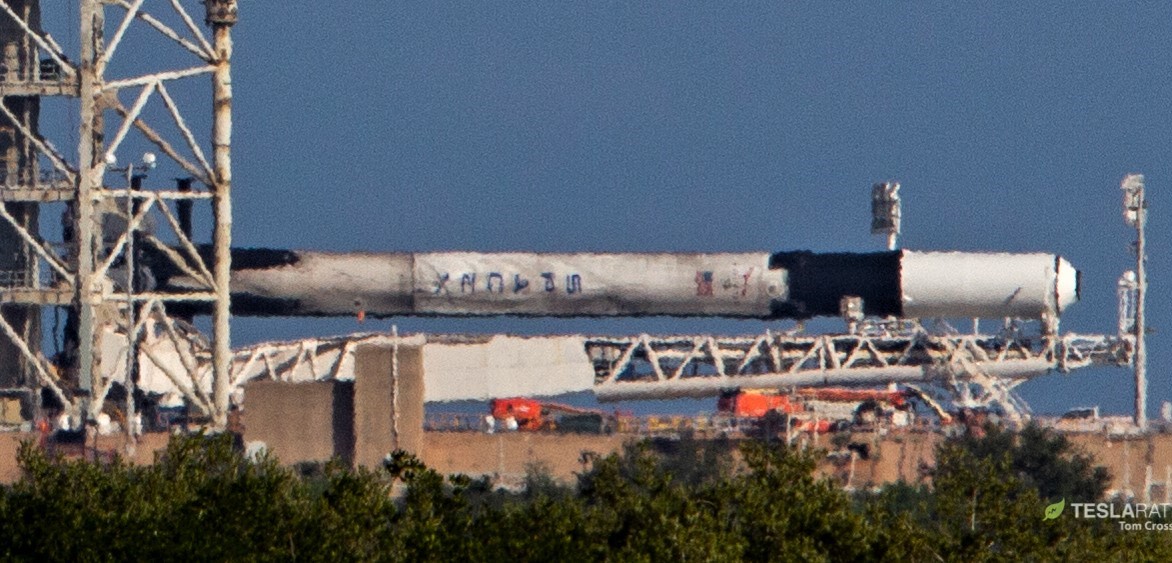
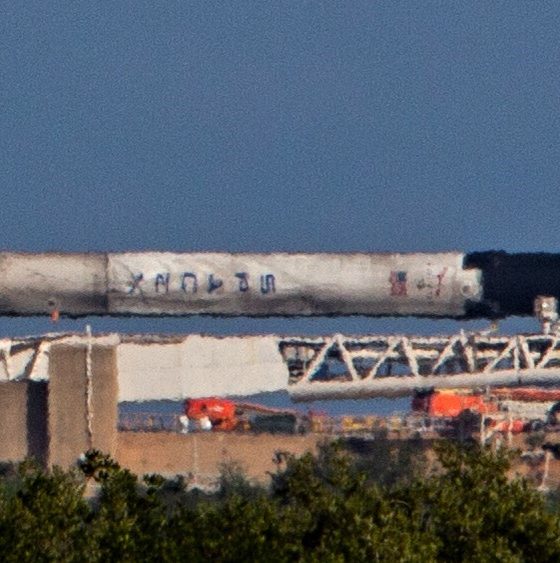
News
SpaceX’s flight-proven Falcon 9 and drone ship fleet ready for duo of launches
SpaceX is gearing up for a duo of flight-proven Falcon 9 launches and drone ship landings on both coasts of the United States, set for liftoff from Cape Canaveral’s Kennedy Space Center and Vandenberg Air Force Base no earlier than (NET) November 15th and 19th, respectively.
#SpaceXArmada: Moments ago, outbound tugboat Hawk with droneship OCISLY in tow in @PortCanaveral. Destination: Booster core landing/recovery LZ of Thursday's #Eshail2 launch, approx 408 mi E of @NASAKennedy. pic.twitter.com/n5FvBdIvpt
— Cowboy Dan (@CowboyDanPaasch) November 12, 2018
East Coast activities
On the East Coast, drone ship Of Course I Still Love You departed from Port Canaveral late last night (Nov 11) as Falcon 9 B1047 rolled onto Pad 39A for a preflight static fire test, where the rocket will be filled with a full complement of fluids (TEA/TEB, helium, nitrogen, oxygen, kerosene) and all nine Merlin 1D engines are ignited in order to replicate the seconds just prior to a real launch. That static fire test was originally expected to occur on November 10 or 11 but has obviously been pushed back a day to Nov. 12, likely meaning that the rocket’s launch – carrying Qatari communications satellite Es’hail-2 – will slip 24 hours to 3:46pm EST (08:46 UTC) on the 16th,
Following the unfortunate loss of Amos-6 during a preflight static fire in September 2016, SpaceX has since made a reasonable move away from performing static fires with payloads integrated atop the rocket, unless the customer specifically requests that it be done that way to save time. As such, Falcon 9 must be brought horizontal, rolled back to the hangar, inspected, and finally have the payload and fairing attached to the rocket, a sensitive process that demands nuance and time. Combined with an analysis of data gathered during the static fire, this process – when all goes as planned – can take at least 48 hours from start to finish, and longer still if any minor off-nominal behavior is observed or the launch customer has additional requirements (typically reserved for NASA and national security-related missions).
- B1047 horizontal at Pad 39A, November 11. (Tom Cross)
- B1047 made an extraordinary ring vortex rainbow as it smashed through Max Q, the point of highest aerodynamic stress on the rocket. (Tom Cross)
- B1046 seen mid-static fire at Pad 39A ahead of Falcon 9 Block 5’s launch debut, May 2018. (Tom Cross)
Because rockets like Falcon 9 are extraordinarily intricate and finely-tuned machines, perfectly nominal launch-related events are few and far between. In reality, the time between static fire rollout and launch readiness is rarely less than three days (72 hours), not including the process of rolling the fully-integrated rocket back out to the pad, aligning and securing the vehicle and transporter-erector (TE) over the flame trench, and finally attaching all umbilical connections and verifying vehicle health. Speaking generally, four to five days is a good rule of thumb for the time it takes to complete Falcon 9’s static fire and return the rocket to the pad after attaching the payload.
Still, it’s always a good sign when a drone ship leaves port, much like OCISLY did on the evening of the 11th. The journey to its destination will take 2-3 days, meaning that the drone ship will be ready to catch Falcon 9 whenever the rocket is ready to launch.

Drone ships and sooty rockets, oh my!
On the West Coast, SpaceX is also getting ready for drone ship Just Read The Instructions (JRTI) to depart Port of San Pedro in anticipation of a presumed sea recovery of Falcon 9 following the NET Nov 19 launch of a multi-satellite rideshare mission known as SSO-A. While SpaceX currently holds two recovery licenses for the booster, one by sea and one at the land-based LZ-4 pad, it’s possible that the company will be forced to use JRTI despite the fact that Falcon 9 will have plenty of propellant left to return itself to the launch site (RTLS). United Launch Alliance’s (ULA) next Delta IV Heavy rocket is currently on-pad with a presumably very expensive National Reconnaissance (NRO) satellite attached roughly 1.5 miles northeast of SpaceX’s LZ-4 – the rest of the gaps are easy enough to fill in.
- Falcon 9 Block 5 booster B1046 seen during both of its post-launch landings. (SpaceX/SpaceX)
- B1047 completed its first successful launch in July 2018. (Tom Cross)
- B1047 seen rolling into 39A’s integration hangar for refurbishment on July 31st. (Reddit – Kent767)
JRTI was spotted by Teslarati photographer Pauline Acalin performing some rare sea trials on November 10 after spending several weeks berthed at port for routine maintenance and deck repairs. Fairing recovery vessel Mr. Steven has also been undergoing some unusual modifications, now proudly sporting what can only be described as a steel horn recently installed on the tip of his bow deck. After sitting out a catch attempt during the launch of SAOCOM 1A to prepare for controlled helicopter drop tests performed over a period of several weeks in October, Mr. Steven will most likely be ready for another stab at operational fairing recovery during SSO-A.
Both rockets – B1047 to the East and (presumed) B1046 to the West – are flight-proven, meaning that they have flown operational orbital missions prior to their upcoming launch attempts, B1047 launched communications satellite Telstar 19V in July 2018, while B1046 has actually performed two successful launches already, Bangabandhu-1 in May and Telkom 4 (Merah Putih) in August.
For prompt updates, on-the-ground perspectives, and unique glimpses of SpaceX’s rocket recovery fleet check out our brand new LaunchPad and LandingZone newsletters!

News
Tesla’s northernmost Supercharger in North America opens

Tesla has opened its northernmost Supercharger in Fairbanks, Alaska, with eight V4 stalls located in one of the most frigid cities in the U.S.
Located just 196 miles from the Arctic Circle, Fairbanks’s average temperature for the week was around -12 degrees Fahrenheit. However, there are plenty of Tesla owners in Alaska who have been waiting for more charging options out in public.
There are only 36 total Supercharger stalls in Alaska, despite being the largest state in the U.S.
Eight Superchargers were added to Fairbanks, which will eventually be a 48-stall station. Tesla announced its activation today:
North America’s northernmost Supercharger Fairbanks, AK (8 stalls) opened to public. https://t.co/M4l04DZ6B5 pic.twitter.com/zyL6bDuA93
— Tesla Charging (@TeslaCharging) December 12, 2025
The base price per kWh is $0.43 at the Fairbanks Supercharger. Thanks to its V4 capabilities, it can charge at speeds up to 325 kW.
Despite being the northernmost Supercharger in North America, it is not even in the Top 5 northernmost Superchargers globally, because Alaska is south of Norway. The northernmost Supercharger is in Honningsvåg, Norway. All of the Top 5 are in the Scandanavian country.
Tesla’s Supercharger expansion in 2025 has been impressive, and although it experienced some early-quarter slowdowns due to V3-to-V4 hardware transitions, it has been the company’s strongest year for deployments.
🚨🚨 Tesla Supercharging had a HUGE year, and they deserve to be recognized.
🍔 Opened Tesla Diner, a drive-in movie theater with awesome, Chef-curated cuisine
🔌 Gave access to Superchargers to several EV makers, including Hyundai, Genesis, Mercedes-Benz, Kia, Lucid, Toyota,… pic.twitter.com/yYT2QEbqoW
— TESLARATI (@Teslarati) December 10, 2025
Through the three quarters of 2025, the company has added 7,753 stations and 73,817 stalls across the world, a 16 percent increase in stations and an 18 percent increase in stalls compared to last year.
Tesla is on track to add over 12,000 stalls for the full year, achieving an average of one new stall every hour, an impressive statistic.
Recently, the company wrapped up construction at its Supercharger Oasis in Lost Hills, California, a 168-stall Supercharger that Tesla Solar Panels completely power. It is the largest Supercharger in the world.
News
Tesla shocks with latest Robotaxi testing move
Why Tesla has chosen to use a couple of Model S units must have a reason; the company is calculated in its engineering and data collection efforts, so this is definitely more than “we just felt like giving our drivers a change of scenery.”

Tesla Model S vehicles were spotted performing validation testing with LiDAR rigs in California today, a pretty big switch-up compared to what we are used to seeing on the roads.
Tesla utilizes the Model Y crossover for its Robotaxi fleet. It is adequately sized, the most popular vehicle in its lineup, and is suitable for a wide variety of applications. It provides enough luxury for a single rider, but enough room for several passengers, if needed.
However, the testing has seemingly expanded to one of Tesla’s premium flagship offerings, as the Model S was spotted with the validation equipment that is seen entirely with Model Y vehicles. We have written several articles on Robotaxi testing mules being spotted across the United States, but this is a first:
🚨 Tesla is using Model S vehicles fitted with LiDAR rigs to validate FSD and Robotaxi, differing from the Model Ys that it uses typically
Those Model Y vehicles have been on the East Coast for some time. These Model S cars were spotted in California https://t.co/CN9Bw5Wma8 pic.twitter.com/UE55hx5mdd
— TESLARATI (@Teslarati) December 11, 2025
Why Tesla has chosen to use a couple of Model S units must have a reason; the company is calculated in its engineering and data collection efforts, so this is definitely more than “we just felt like giving our drivers a change of scenery.”
It seems to hint that Tesla could add a premium, more luxury offering to its Robotaxi platform eventually. Think about it: Uber has Uber Black, Lyft has Lyft Black. These vehicles and services are associated with a more premium cost as they combine luxury models with more catered transportation options.
Tesla could be testing the waters here, and it could be thinking of adding the Model S to its fleet of ride-hailing vehicles.
Reluctant to remove the Model S from its production plans completely despite its low volume contributions to the overall mission of transitioning the world to sustainable energy, the flagship sedan has always meant something. CEO Elon Musk referred to it, along with its sibling Model X, as continuing on production lines due to “sentimental reasons.”
However, its purpose might have been expanded to justify keeping it around, and why not? It is a cozy, premium offering, and it would be great for those who want a little more luxury and are willing to pay a few extra dollars.
Of course, none of this is even close to confirmed. However, it is reasonable to speculate that the Model S could be a potential addition to the Robotaxi fleet. It’s capable of all the same things the Model Y is, but with more luxuriousness, and it could be the perfect addition to the futuristic fleet.
News
Rivian unveils self-driving chip and autonomy plans to compete with Tesla
Rivian, a mainstay in the world of electric vehicle startups, said it plans to roll out an Autonomy+ subscription and one-time purchase program, priced at $49.99 per month and $2,500 up front, respectively, for access to its self-driving suite.
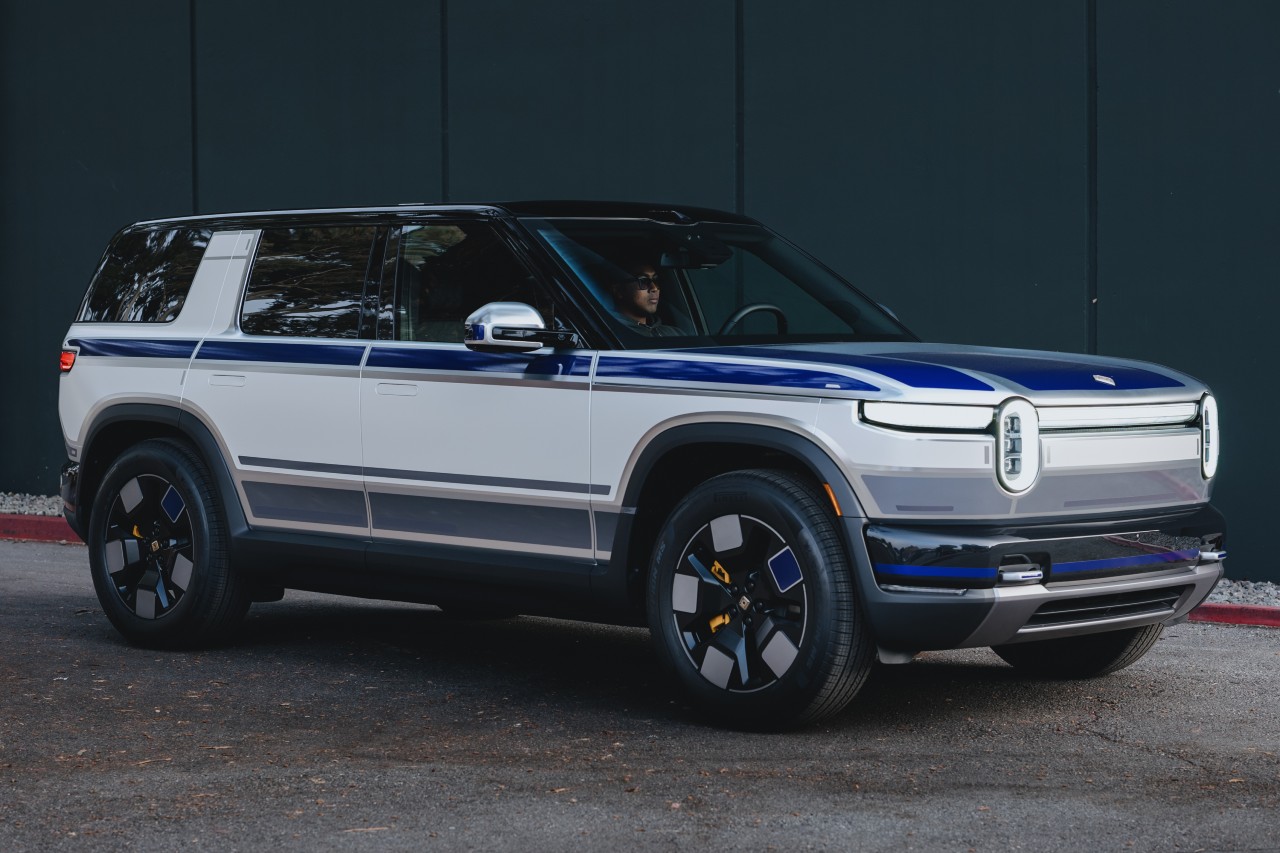
Rivian unveiled its self-driving chip and autonomy plans to compete with Tesla and others at its AI and Autonomy Day on Thursday in Palo Alto, California.
Rivian, a mainstay in the world of electric vehicle startups, said it plans to roll out an Autonomy+ subscription and one-time purchase program, priced at $49.99 per month and $2,500 up front, respectively, for access to its self-driving suite.
CEO RJ Scaringe said it will learn and become more confident and robust as more miles are driven and it gathers more data. This is what Tesla uses through a neural network, as it uses deep learning to improve with every mile traveled.
He said:
“I couldn’t be more excited for the work our teams are driving in autonomy and AI. Our updated hardware platform, which includes our in-house 1600 sparse TOPS inference chip, will enable us to achieve dramatic progress in self-driving to ultimately deliver on our goal of delivering L4. This represents an inflection point for the ownership experience – ultimately being able to give customers their time back when in the car.”
At first, Rivian plans to offer the service to personally-owned vehicles, and not operate as a ride-hailing service. However, ride-sharing is in the plans for the future, he said:
“While our initial focus will be on personally owned vehicles, which today represent a vast majority of the miles to the United States, this also enables us to pursue opportunities in the rideshare space.”
The Hardware
Rivian is not using a vision-only approach as Tesla does, and instead will rely on 11 cameras, five radar sensors, and a single LiDAR that will face forward.
It is also developing a chip in-house, which will be manufactured by TSMC, a supplier of Tesla’s as well. The chip will be known as RAP1 and will be about 50 times as powerful as the chip that is currently in Rivian vehicles. It will also do more than 800 trillion calculations every second.
Meet the Rivian Autonomy Processor.
Fast, smart, scalable and purpose-built for autonomous driving and the world of physical AI. Hitting the open road in 2026. pic.twitter.com/0wYXi5WKy7
— Rivian (@Rivian) December 11, 2025
RAP1 powers the Autonomy Compute Module 3, known as ACM3, which is Rivian’s third-generation autonomy computer.
ACM3 specs include:
- 1600 sparse INT8 TOPS (Trillion Operations Per Second).
- The processing power of 5 billion pixels per second.
- RAP1 features RivLink, a low-latency interconnect technology allowing chips to be connected to multiply processing power, making it inherently extensible.
- RAP1 is enabled by an in-house developed AI compiler and platform software
As far as LiDAR, Rivian plans to use it in forthcoming R2 cars to enable SAE Level 4 automated driving, which would allow people to sit in the back and, according to the agency’s ratings, “will not require you to take over driving.”
More Details
Rivian said it will also roll out advancements to the second-generation R1 vehicles in the near term with the addition of UHF, or Universal Hands-Free, which will be available on over 3.5 million miles of roadway in the U.S. and Canada.
More than any other feature, our owners have asked for more hands-free miles.
With Universal Hands-Free, you can now enjoy hands-free assisted driving on any road with clearly defined lanes. That’s roughly 3.5 million miles in the U.S. and Canada.
Look for it in our next… pic.twitter.com/ZFhwVzvt6b
— Rivian (@Rivian) December 11, 2025
Rivian will now join the competitive ranks with Tesla, Waymo, Zoox, and others, who are all in the race for autonomy.
